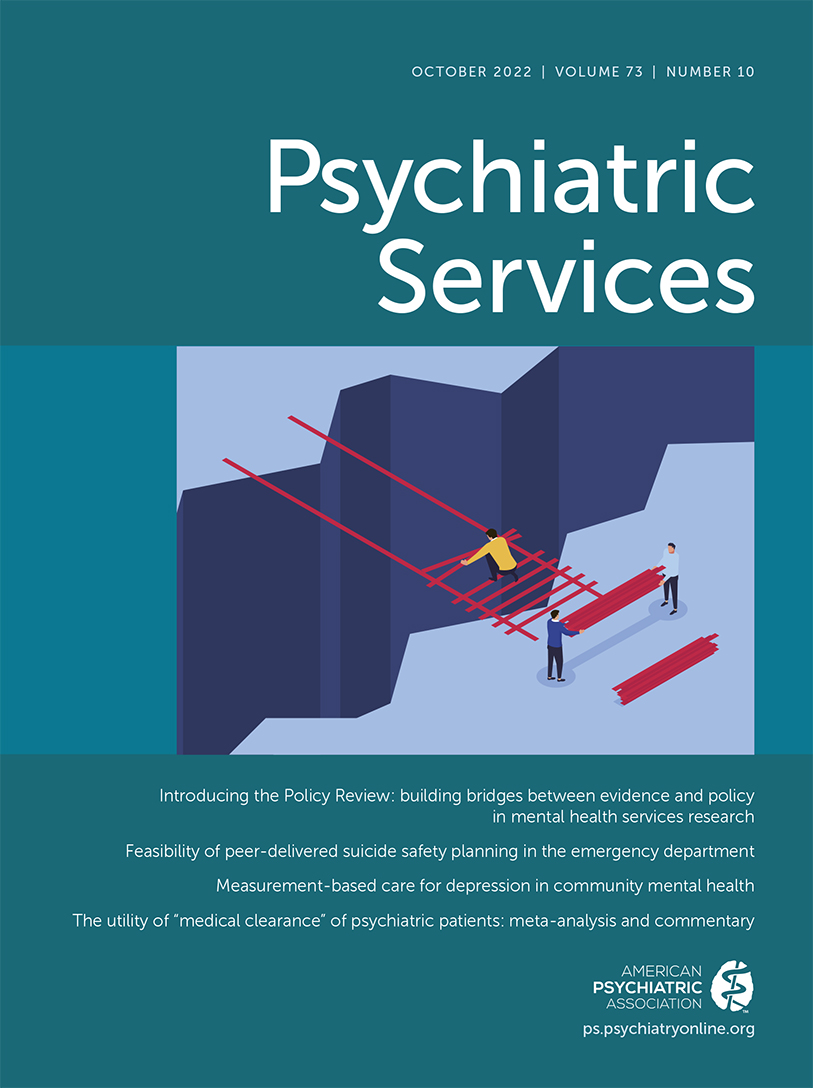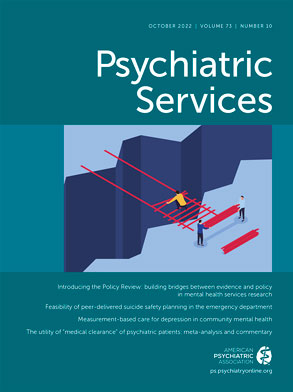The implementation of 988 in July 2022 as a national behavioral health crisis hotline is a critical opportunity for reducing reliance on 911 and transforming crisis care in the United States. For many decades, mental health professionals across the country have relied on the out-of-office telephone call recording, “If this is an emergency, hang up and dial 911,” or similar messages. The rationale for such recordings is to give individuals in a mental health crisis or their family members a means of reaching help when their regular mental health provider is off duty or away. Mental health professionals have been trained or acculturated into ensuring that the recording is always live, and clients have been trained and acculturated—through the recording itself and many other means—to call 911 in the case of “an emergency.” The out-of-office recording is founded on two propositions: that the caller knows what constitutes “an emergency” and that the caller understands what 911 is. Presumably, nearly every person in the United States knows what 911 is, because we learn this number from an early age and it is repeatedly reinforced in many contexts. On the other hand, callers may or may not know what constitutes an emergency, unless it has been detailed in conjunction with their mental health provider, which may not be a routine part of treatment planning and shared decision making.
The fact that mental health providers will be able to change their out-of-office recording as of July 2022 and encourage clients in crisis to dial 988 provides an opportunity to reflect on why the 911 call processing system has long been ill-equipped to respond to many behavioral health crises. It also encourages us to consider the vision for the 988 system and how mental health clinicians can play a role in making it a success. We briefly outline the challenges of using 911 as our nation’s primary crisis line, including for mental health emergencies, describe how 988 is positioned to complement it, and offer three concrete recommendations to guide clinicians through the implementation of 988 in the coming years.
Background on the 911 Call Processing System
Although 911 has become the United States’ lifeline, what happens when 911 is called might not always be known to clients, their family members, and indeed mental health professionals. In particular, they may not be aware that placing a 911 call might be the equivalent of calling the police, even if engaging law enforcement was not the intended or desired response. Callers who dial 911 are connected to a public safety answering point (PSAP), the local call center responsible for responding to emergencies. More than 6,000 PSAPs exist in the United States, each operating independently and run by different agencies (some by local governments and others by law enforcement agencies, fire departments, or emergency management agencies) (
1). The result is a highly variable system with differing standards and training for taking calls and dispatching first responders and with limited strategies to distinguish calls that present a true public safety emergency and require a police response from calls that might be better served with alternative responses. Overreliance on 911 has contributed to overpolicing, unnecessary uses of force, criminal legal system involvement, and other negative outcomes—all of which have been disproportionately experienced by communities of color (
2,
3).
For many years, callers have been able to use alternative call lines such as 211 (essential community services), 311 (nonemergency public services), and crisis hotlines, including the National Suicide Prevention Lifeline, Hopeline, Veterans Crisis Line, Crisis Text Line, and numerous locally run crisis lines and peer-run hotlines. Yet, these numbers are not widely known by the general population in the way that 911 is, and the number of different hotlines, as well as variability in their operating hours, can make it confusing for users to decide which one to choose, especially in times of crisis.
Planned 988 Implementation
Recognizing the limitations of 911 as the default for crisis calls and the need for an easy-to-remember number with access to suicide prevention and crisis services, Congress passed the National Suicide Hotline Designation Act in 2020 with bipartisan support, designating 988 as the new three-digit dialing code that will route callers to the National Suicide Prevention Lifeline. By July 16, 2022, all states must have ensured that they have 24/7 coverage by in-state Lifeline contact centers for 988 callers. Callers will be connected to trained crisis counselors who are part of the Lifeline network and can link callers to local crisis services. There are multiple obstacles to enacting this vision on time, and many questions remain about what 988 will look like across the country. However, the goal of 988 is to provide a single national code for mental health emergencies as a means of providing more effective mental health crisis response. For it to work—and for it to become a true alternative to 911 and police responses—requires extensive ongoing planning across all levels of government, from local call centers, to state mental health authorities, to federal oversight through legislation and guidelines. It is a major implementation feat in a very short time frame.
How Mental Health Clinicians Can Play a Role in 988 Implementation
One question pertains to when and how mental health professionals should change their recording, and another relates to how mental health professionals should be involved in the 988 rollout. Helpful implementation guidance is already available to states, leadership of behavioral health organizations, Lifeline contact centers, and PSAPs (
4,
5). Mental health clinicians can also learn more about local 988 implementation detailed in publicly available state implementation plans that outline some of the logistics of 988 call taking and emergency responses (for an example from New York State, see [
6]). Planning for 988 in practices and clinical programs entails not just changing out-of-office recordings but also educating clients about when to use 988. Three concrete recommendations can guide clinicians during this implementation period.
First, mental health professionals can work with their clients (and their family members, as appropriate) to define what constitutes an “emergency” or a “crisis” and differentiate among those simply requiring “someone to talk to” or those warranting responses by police, emergency medical services, or a mobile crisis team or other local nonpolice mental health or civilian group. From our ongoing research in New York State about the upcoming implementation of 988, it has become clear that members of the public (including mental health consumers and their family members) define crisis in a variety of ways and have different thresholds for determining when they need professional assistance. Making these definitions and thresholds explicit—and asking clients what types of response they prefer—is an important part of crisis planning. The implementation of 988 offers an opportunity to have these conversations with clients.
Second, clinicians can educate their clients about how 988 works in their own community and how it interacts with 911. How are 988 call takers trained? How connected are they to local 911 call centers? Can a 911 call taker transfer calls over to 988 and vice versa? Can 988 dispatch a mobile crisis team, when needed, without police presence and under what circumstances? When is calling 911 still warranted? Knowing the answers to such questions will help clinicians educate their clients about the likely result of a 988 call, the likely result of a 911 call, and when it is appropriate to call either 988 or 911. For example, it is hoped that 988 will provide telephone support in a way that 911 typically does not, and 988 is not the ideal means to solicit emergency medical services, whereas 911 is.
Third, and relatedly, clinicians can use the 988 rollout as an opportunity to learn more about the crisis care continuum currently available in their communities, to highlight key gaps for state leadership, and to advocate for critical investments. The Substance Abuse and Mental Health Services Administration recently published a best-practices tool kit outlining national guidelines for behavioral health crisis care (
7). It describes a no-wrong-door approach to crisis care with three core elements: someone to talk to (e.g., 24/7 crisis call centers), someone to respond (e.g., local mobile crisis teams), and a place to go (e.g., community-based stabilization services). In an ideal system, 988 will be a convenient portal to access this continuum of services, but in practical terms, 988 personnel will be able to connect individuals only to existing services. Mental health clinicians have an important voice in raising awareness about what is missing in their local systems and can help articulate how to best scaffold resources for their clients as well as those who are not currently connected to care.
Mental health professionals should be preparing to change their out-of-office call recording given the massive new opportunity that 988 presents in 2022 and beyond. Moreover, they should be planning for the 988 rollout more generally. It is time to end complete reliance on 911, given its detrimental effects in some instances (e.g., police dispatch when it is not warranted and possibly resulting in harmful consequences). But we need to be equally attuned to the capabilities of 988 given current services, as well as what else we need to put in place to ensure that states and local governments deliver on the promise of 988: a robust, equitable, and coordinated crisis response system.

